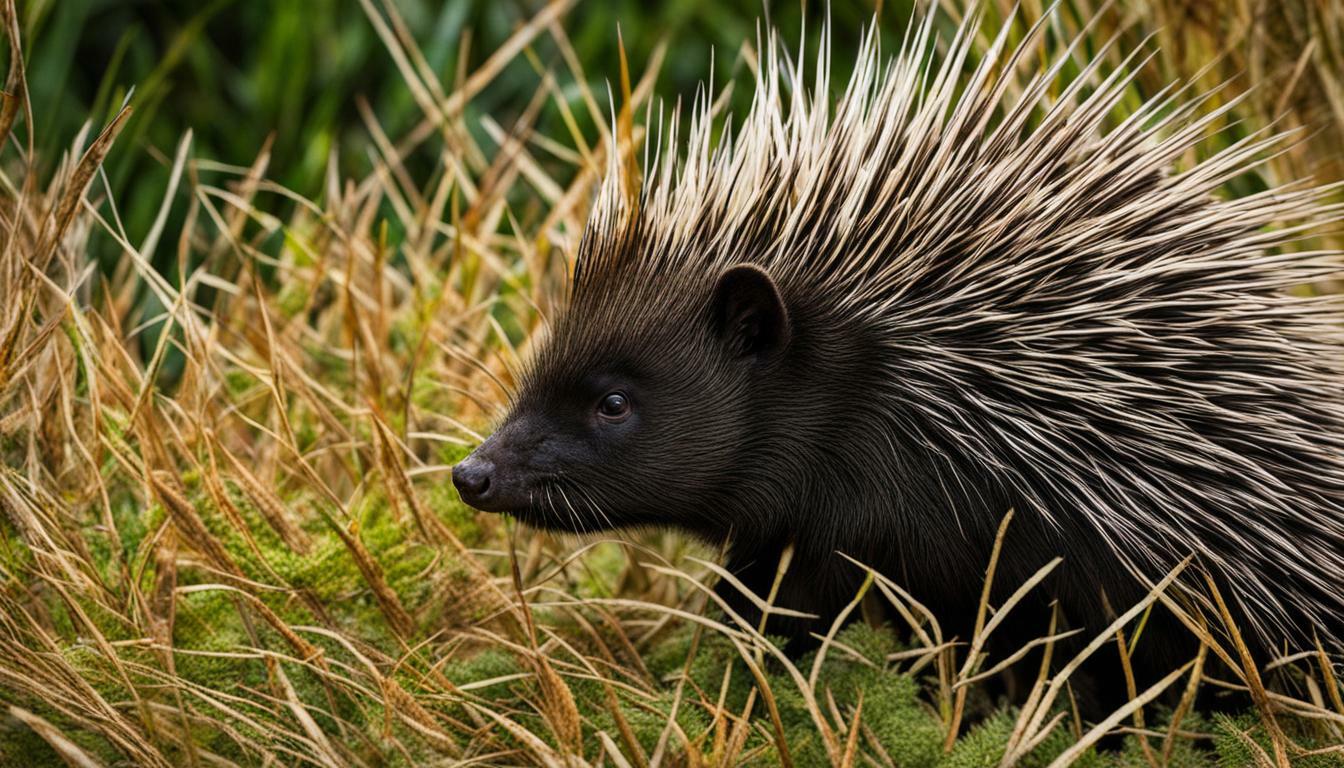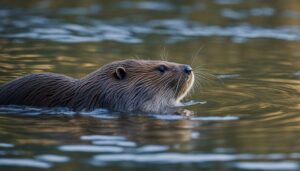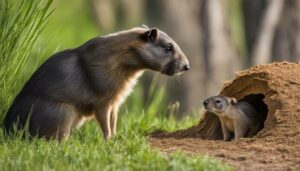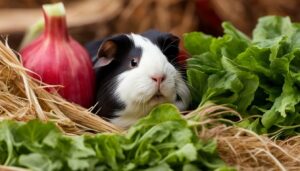The truth about whether porcupines have fur or not will be revealed in this comprehensive guide.
Factual data: Porcupines have soft hair, but their back, sides, and tail are usually mixed with sharp quills. These quills can stand erect when the porcupine is threatened. The quills are modified hairs embedded in the skin musculature and can easily detach when touched. The quills of New World porcupines are sharp, stiff, and circular in cross section with barbed tips. Old World porcupines have flattened, grooved, and flexible or long, hollow, and sharp spines. They also have specialized hollow quills that can be used as rattles. Porcupines are nocturnal and herbivorous, and their diet includes bark, stems, leaves, flowers, fruits, and nuts. They can also gnaw on antlers and bones for calcium and other minerals. Porcupines can be found in various habitats, including forests, deserts, and grasslands, and they can climb trees. They are generally solitary animals but may den in groups. Porcupines give birth to one to four young after a gestation period of about 100 days. The spines of porcupines are not fur but modified hairs that serve as a defense mechanism.
Key Takeaways:
- Porcupines have soft hair mixed with sharp quills.
- The quills are modified hairs that can easily detach when touched.
- New World porcupines have sharp, stiff quills with barbed tips, while Old World porcupines have flattened, grooved, and flexible or long, hollow, and sharp spines.
- Porcupines are nocturnal and herbivorous, feeding on bark, stems, leaves, flowers, fruits, nuts, and even antlers and bones for minerals.
- They can be found in various habitats, climb trees, and are generally solitary, but may den in groups.
Please note that the content provided in this article is meant for informational purposes only.
Understanding Porcupine Anatomy
To understand whether porcupines have fur, it’s essential to delve into their unique anatomy. Porcupines are fascinating creatures with distinct characteristics that set them apart from other mammals. They possess soft hair, but their back, sides, and tail are usually mixed with sharp quills, which serve as a means of defense.
The quills of porcupines are not fur but modified hairs that are embedded in the skin musculature. These quills can easily detach when touched and can stand erect when the porcupine feels threatened, effectively deterring potential predators. The quills of New World porcupines are sharp, stiff, and circular in cross-section with barbed tips, while Old World porcupines have flattened, grooved, and flexible or long, hollow, and sharp spines. The Old World porcupine also possesses specialized hollow quills that can be used as rattles, creating a unique adaptation to its surroundings.
Porcupines are primarily nocturnal and herbivorous animals. They have a varied diet, including bark, stems, leaves, flowers, fruits, and nuts. Additionally, porcupines have the ability to gnaw on antlers and bones, which provides them with an important source of calcium and other minerals. These dietary habits help sustain their overall health and well-being.
| Primary Traits | Secondary Traits |
|---|---|
| Soft hair | Sharp quills |
| Nocturnal | Herbivorous |
| Varied diet | Ability to climb trees |
Porcupines are adaptable creatures that can be found in various habitats, including forests, deserts, and grasslands. They have the remarkable ability to climb trees, which offers them additional protection from predators. While porcupines are generally solitary animals, they may occasionally den in groups, providing them with social interaction and protection.
In conclusion, porcupines have soft hair, but their back, sides, and tail are adorned with sharp quills. These quills are modified hairs that serve as a defense mechanism for the porcupine. With their unique anatomy and remarkable adaptations, porcupines have carved out a niche in the animal kingdom, thriving in diverse habitats across the globe.
Porcupine Fur vs. Quills
Porcupines possess both fur and quills, but they serve different functions in their survival. The fur on their body consists of soft hair, providing insulation and camouflage. It covers the porcupine’s back, sides, and tail, offering protection from the elements and predators. However, unlike conventional fur, porcupine quills are modified hairs that are embedded in the skin musculature. These quills are stiff, sharp, and can stand erect when the porcupine feels threatened.
The quills of New World porcupines are sharp, stiff, and circular in cross-section, with barbed tips. When touched, these quills can easily detach from the porcupine’s skin due to a special muscular arrangement. In contrast, Old World porcupines have flattened, grooved, and flexible spines or long, hollow, and sharp quills. They even possess specialized hollow quills that can be used as rattles.
Porcupines rely on their quills as a primary defense mechanism. When threatened, they can raise their quills, making themselves appear larger and more intimidating to potential predators. The barbed tips of the quills make them difficult to remove once they become embedded in an attacker’s skin, causing pain and possible infection. In addition to their defensive purposes, porcupine quills also play a role in communication and mating rituals, with males often using their rattling quills to attract potential mates.
| Porcupine Fur | Porcupine Quills |
|---|---|
| Soft hair | Modified hairs |
| Provides insulation and camouflage | Serve as a defense mechanism |
| Covers the body for protection | Can stand erect and puncture when threatened |
Porcupines are primarily nocturnal and herbivorous, feeding on a variety of plant materials such as bark, stems, leaves, flowers, fruits, and nuts. However, they also have a unique adaptation where they can gnaw on antlers and bones, deriving essential calcium and other minerals from these sources. These fascinating creatures can be found in diverse habitats, including forests, deserts, and grasslands. Remarkably, porcupines are excellent climbers and can even scale trees with ease.
Although porcupines are generally solitary animals, they may occasionally den in groups for warmth and protection. During the reproductive period, female porcupines give birth to one to four offspring after a gestation period of about 100 days. The young are born with soft quills that harden within a few hours. These young porcupines rely on their mother’s care and guidance until they are independent enough to venture out on their own.
In summary, porcupines possess both fur and quills, with each serving a distinct purpose in their survival. Their fur provides insulation and camouflage, while their quills act as a formidable defense mechanism. These remarkable creatures have adapted to various habitats and exhibit fascinating behaviors, making them a true marvel of the animal kingdom.
Types of Fur on Porcupines
Porcupines exhibit different types of fur, each adapted to their specific needs in different body regions. The fur of porcupines is not uniform throughout their body; rather, it varies in texture, color, and distribution.
Starting with the soft underfur, which is dense and provides insulation, porcupines have a layer of longer, coarse guard hairs that serve as protection against predators. These guard hairs are usually mixed with sharp quills, which are actually modified hairs and not true fur. The quills of porcupines are a defining characteristic, with their sharp, stiff nature. They are circular in cross-section and have barbed tips, making them difficult to remove once embedded in an attacker’s skin. New World porcupines possess these quills, which can easily detach when touched, causing discomfort or injury to the predator.
In contrast, Old World porcupines have a different type of fur. Their spines, which are also modified hairs, are flattened, grooved, and flexible. These spines can be used as rattles when the porcupine feels threatened, creating a warning sound. Some Old World porcupines even possess long, hollow spines that end in a sharp tip, providing additional protection.
The unique types of fur exhibited by porcupines highlight their remarkable adaptations for survival. From the dense underfur to the sharp quills and specialized spines, each type of fur plays a crucial role in the porcupine’s ability to defend itself and thrive in various habitats.
For a comprehensive overview of the different types of fur on porcupines, refer to the following table:
| Region | Type of Fur | Characteristics |
|---|---|---|
| Underfur | Dense and soft | Provides insulation |
| Guard hairs | Coarse and longer | Offers protection |
| Quills | Sharp, stiff, and circular | Modified hairs; serve as a defense mechanism |
| Specialized spines | Flattened, grooved, and flexible or long, hollow, and sharp | Additional protection and warning signals |
Porcupine Quills and Their Function
Porcupine quills play a crucial role in protecting these animals from potential threats. These quills are not fur, but rather modified hairs that have evolved to serve as a formidable defense mechanism. When a porcupine feels threatened, it can raise and erect its quills, creating a formidable barrier against predators.
Porcupine quills are a fascinating adaptation. The quills of New World porcupines are sharp, stiff, and circular in cross section with barbed tips, making them difficult to remove once embedded in an attacker. On the other hand, Old World porcupines have flattened, grooved, and flexible spines or long, hollow, and sharp spines. Additionally, some species of porcupines have specialized hollow quills that can be used as rattles, adding an auditory component to their defensive strategy.
Although porcupines primarily rely on their quills for defense, they also possess other adaptations that enhance their survival. These nocturnal herbivores have a varied diet, including bark, stems, leaves, flowers, fruits, and nuts. Additionally, porcupines have been observed gnawing on antlers and bones, which provides them with a source of calcium and other essential minerals.
Porcupines can be found in a wide range of habitats, including forests, deserts, and grasslands. While they are generally solitary animals, they may den in groups for added protection. Female porcupines give birth to one to four young after a gestation period of about 100 days, ensuring the continuation of their species.
Porcupine Quills: A Formidable Defense Mechanism
In summary, porcupine quills are not fur but modified hairs that serve as a defense mechanism. These quills play a crucial role in protecting porcupines from potential threats by providing them with a formidable barrier against predators. The sharp, barbed quills of New World porcupines, and the flattened, grooved, or long and hollow spines of Old World porcupines, make these animals difficult to attack or handle. In addition to their quills, porcupines have other adaptations such as a nocturnal lifestyle, herbivorous diet, and the ability to climb trees, which further enhance their survival in various habitats. These unique characteristics contribute to the successful survival of porcupines in the wild.
| Porcupine Quills: Key Points |
|---|
| Porcupine quills are modified hairs that serve as a defense mechanism. |
| New World porcupines have sharp, stiff, and circular quills with barbed tips. |
| Old World porcupines possess flattened, grooved, or long and hollow spines. |
| Porcupines have specialized hollow quills that can be used as rattles. |
| Porcupines are nocturnal herbivores with a varied diet. |
| Porcupines can be found in various habitats and can climb trees. |
| Porcupines are generally solitary but may den in groups. |
Porcupine Diet and Habitat
Understanding the diet and habitat of porcupines sheds light on their choice of fur adaptation. Porcupines are nocturnal herbivores, meaning they primarily feed on plant matter during the nighttime hours. Their diet consists of bark, stems, leaves, flowers, fruits, and nuts. In addition to these typical herbivorous foods, porcupines have also been observed gnawing on antlers and bones, which provide them with calcium and other essential minerals.
To support their diet, porcupines can be found in a variety of habitats, including forests, deserts, and grasslands. Their adaptability allows them to thrive in different environments, ranging from dense woodland areas to open plains. Despite their stout build and slow movements, porcupines are surprisingly agile climbers, capable of ascending trees to access leaves, twigs, and other vegetation.
Porcupines are generally solitary animals, preferring to live and forage alone. However, they may den in groups, especially during the colder months. These communal dens provide porcupines with warmth and protection against predators. Within these dens, porcupines may exhibit some social behavior, such as grooming and interacting with one another.
| Diet | Habitat | Social Behavior |
|---|---|---|
| Nocturnal herbivores | Forests, deserts, grasslands, etc. | Solitary, occasional group denning |
| Bark, stems, leaves, flowers, fruits, nuts | Adaptable to various environments | Grooming, interaction in communal dens |
| Gnaw on antlers and bones for minerals | Skilled climbers, can climb trees | N/A |
It’s important to note that the spines of porcupines, commonly mistaken for fur, are actually modified hairs that serve as a defense mechanism. These sharp quills can stand erect when the porcupine feels threatened, deterring potential predators with their barbed tips. The quills are embedded in the porcupine’s skin musculature and can easily detach when touched, making them an effective means of protection.
By understanding the diet, habitat, and adaptations of porcupines, we gain a deeper appreciation for these unique creatures. Their choice of fur adaptation, in the form of sharp quills, serves as both a physical barrier and a warning to those who dare to threaten them in their natural environment.
Porcupine Behavior and Social Structure
Porcupines exhibit unique behavioral patterns and have a distinct social structure. These fascinating creatures are primarily solitary, preferring to go about their lives independently. However, they occasionally den in groups, particularly during the winter months, when they seek warmth and protection.
Despite their solitary nature, porcupines do engage in certain social interactions. They communicate through a variety of vocalizations, including grunts, whines, and teeth chattering. Additionally, they use their quills to communicate dominance or aggression. When a porcupine feels threatened, its quills can stand erect, warning potential predators to keep their distance.
Porcupines are predominantly nocturnal, meaning they are most active during the night. This behavior helps them avoid predators and allows them to forage for food undisturbed. As herbivores, porcupines have a diverse diet that includes bark, stems, leaves, flowers, fruits, and nuts. They can even gnaw on antlers and bones to supplement their calcium and mineral intake.
Porcupines possess impressive climbing abilities, thanks to their strong claws and prehensile tails. They can navigate tree branches with ease, providing them with additional food sources and the ability to escape from predators. These remarkable adaptations contribute to their survival in various habitats, including forests, deserts, and grasslands.
| Porcupine Characteristics | Description |
|---|---|
| Nocturnal | Primarily active during the night. |
| Solitary | Prefer to live alone, but may den in groups during winter. |
| Communicative | Use vocalizations and quill displays to communicate with others. |
| Herbivorous | Feed on bark, stems, leaves, flowers, fruits, nuts, and even antlers and bones. |
| Skilled climbers | Capable of climbing trees to access food and escape from predators. |
To summarize, porcupines are fascinating creatures with unique behavioral patterns and a distinct social structure. Although they are primarily solitary, they occasionally den in groups for warmth and protection. These nocturnal herbivores communicate through vocalizations and quill displays, and they have impressive climbing abilities that enable them to access food sources and escape from predators. Their adaptability allows them to thrive in various habitats, making them a truly remarkable species in the animal kingdom.
Reproduction and Offspring
Porcupines have fascinating reproductive strategies that contribute to their survival. These unique creatures have a gestation period of approximately 100 days, after which they give birth to one to four young, known as porcupettes. Female porcupines have a specialized reproductive system that allows them to control the timing of fertilization. This ability is crucial for ensuring that the young are born during favorable conditions, such as when food sources are abundant and the weather is conducive to their survival.
During mating season, male porcupines will actively seek out female porcupines by emitting various vocalizations and scents. Once a female is receptive to mating, she will assume a unique posture, tilting her hindquarters upward to provide access to the male. Due to the presence of sharp quills on both males and females, mating can be a careful and delicate process to avoid injury. However, these adaptations have allowed porcupines to successfully reproduce and maintain their populations in diverse habitats.
After birth, porcupette’s quills are soft and pliable, allowing them to avoid causing harm to the mother during the birthing process. However, they quickly harden within a few hours, providing the young with the same defensive capabilities as their parents. Porcupette’s are born with their eyes open and are capable of independent movement shortly after birth. Despite this, they will remain close to their mother for protection and nourishment, typically nursing for several months before becoming self-sufficient.
| Porcupine Reproduction Facts | |
|---|---|
| Gestation Period | Approximately 100 days |
| Number of Offspring | One to four young (porcupettes) |
| Mating Behavior | Male porcupines actively seek out receptive females |
| Reproductive Control | Female porcupines are able to control the timing of fertilization |
| Quill Development | Quills harden shortly after birth |
| Nursing Period | Porcupette’s nurse for several months before becoming independent |
Porcupines’ fascinating reproductive strategies and the development of their young contribute to their survival in various habitats. Adapting to challenges such as predation and environmental conditions, these remarkable creatures continue to thrive in their unique niche as nature’s spiky marvels.
Porcupine Adaptations and Survival Tactics
Porcupines have evolved remarkable adaptations that aid in their survival and defense. While they may appear cute and cuddly, these creatures have a unique set of features that protect them from predators and help them thrive in their environments.
One of the most recognizable adaptations of porcupines is their quills. These quills are actually modified hairs embedded in the porcupine’s skin musculature. When threatened, the porcupine can raise its quills, making itself appear larger and deterring potential attackers. The quills of New World porcupines are sharp, stiff, and circle-shaped with barbed tips, while Old World porcupines have flattened, grooved spines or long, hollow spines. Some Old World porcupines also possess specialized hollow quills that can be used as rattles to warn off predators.
Porcupines’ diet and feeding habits are also important adaptations. These nocturnal herbivores consume a variety of plant materials, including bark, stems, leaves, flowers, fruits, and nuts. However, their diet is not limited to vegetation alone. Porcupines will also gnaw on antlers and bones, seeking calcium and other minerals necessary for their well-being. This ability to adapt their diet to include unconventional food sources allows porcupines to survive and thrive in changing environments.
Porcupines are incredibly versatile when it comes to their habitats. They can be found in various ecosystems, including forests, deserts, and grasslands. Their unique adaptation of being able to climb trees allows them to access food sources, seek shelter, and escape potential threats. Despite their solitary nature, porcupines may sometimes den in groups, ensuring collective protection and sharing of resources.
In conclusion, porcupines have evolved remarkable adaptations that contribute to their survival and defense. Their quills, specialized feeding habits, ability to climb trees, and versatile habitat preferences are all vital components of their unique adaptations. These fascinating creatures serve as a testament to the incredible diversity and resourcefulness of the animal kingdom.
Conclusion
In conclusion, porcupines possess both fur and quills, with each serving an important purpose in their unique adaptations for survival.
Porcupines have soft hair covering their bodies, but their back, sides, and tail are typically adorned with sharp quills. These quills, modified hairs embedded in the skin musculature, can stand erect when the porcupine feels threatened. The quills of New World porcupines are sharp, stiff, and circular in cross-section with barbed tips, while Old World porcupines have flattened, grooved, and flexible or long, hollow, and sharp spines.
While porcupine fur provides insulation and helps regulate body temperature, the quills serve as a remarkable defense mechanism. These specialized hollow quills can easily detach when touched, making them a formidable deterrent against predators. In some cases, porcupines even have quills that function as rattles, amplifying their warning signals.
Porcupines are primarily nocturnal and herbivorous, feasting on a diet that includes bark, stems, leaves, flowers, fruits, and nuts. They are also known to gnaw on antlers and bones in search of calcium and other minerals essential for their well-being. These adaptable creatures can be found in various habitats, such as forests, deserts, and grasslands. Despite their seemingly cumbersome appearance, porcupines are skilled climbers, often seeking refuge in trees.
Although porcupines are generally solitary animals, they may gather in groups for denning purposes. After a gestation period of approximately 100 days, female porcupines give birth to one to four young, who rely on their mother’s care and protection during the early stages of life.
It is important to note that the spines found on porcupines are not fur, but rather modified hairs that serve as an effective defense mechanism. These quills, along with their soft fur, allow porcupines to survive in diverse environments and ensure their continued existence in the wild.
FAQ
Do porcupines have fur?
Yes, porcupines have soft hair, but their back, sides, and tail are usually mixed with sharp quills.
What are porcupine quills?
Porcupine quills are modified hairs embedded in the skin musculature. They are sharp, stiff, and circular in cross section with barbed tips.
Are porcupines nocturnal?
Yes, porcupines are nocturnal animals, meaning they are active during the night.
What do porcupines eat?
Porcupines are herbivorous and their diet includes bark, stems, leaves, flowers, fruits, nuts, and they can also gnaw on antlers and bones for calcium and other minerals.
Where can porcupines be found?
Porcupines can be found in various habitats, including forests, deserts, and grasslands. They are also capable of climbing trees.
Do porcupines live in groups?
Porcupines are generally solitary animals but may den in groups.
How many offspring do porcupines have?
Porcupines give birth to one to four young after a gestation period of about 100 days.
Are the spines of porcupines a type of fur?
No, the spines of porcupines are not fur but modified hairs that serve as a defense mechanism.




